

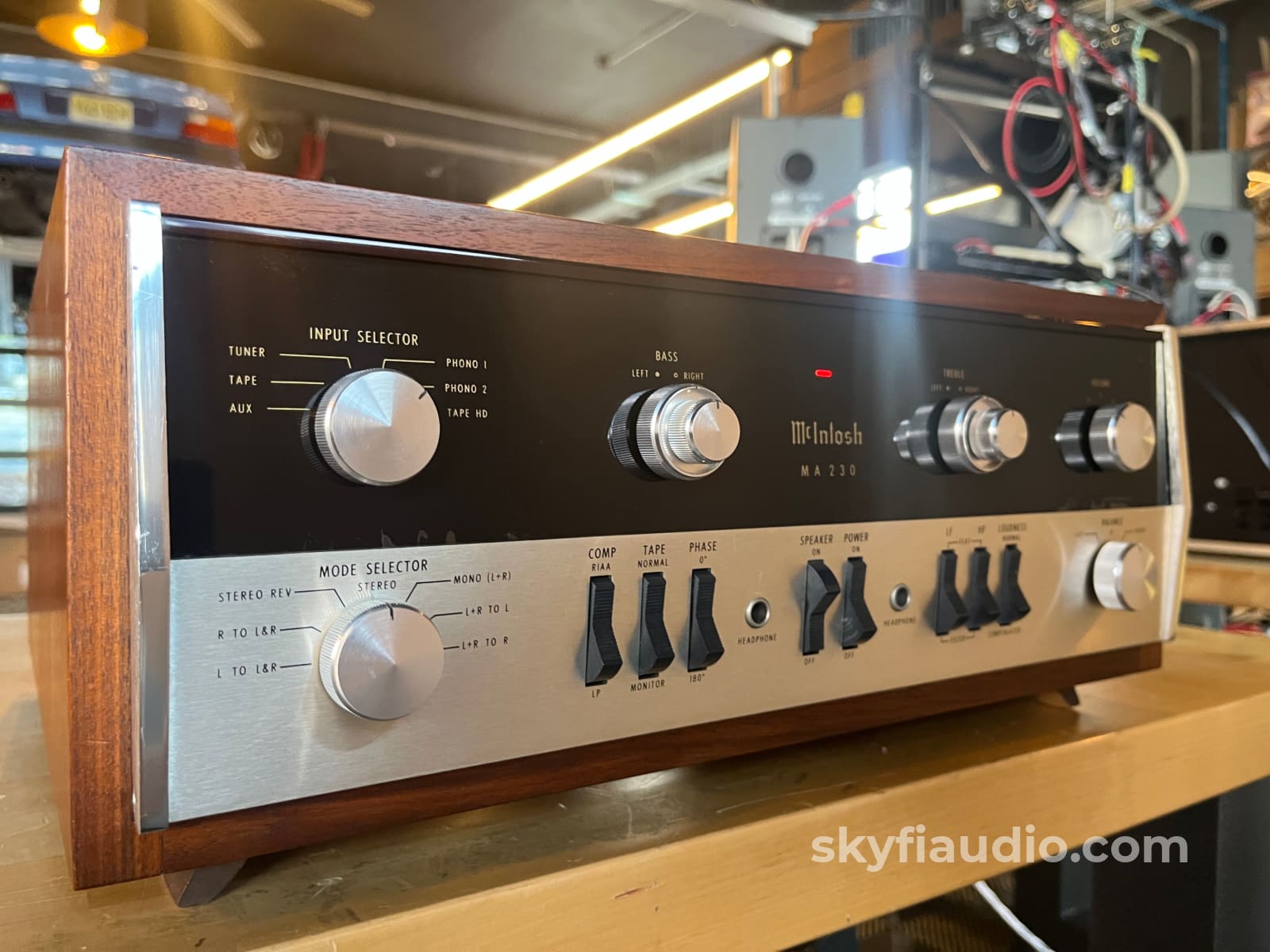
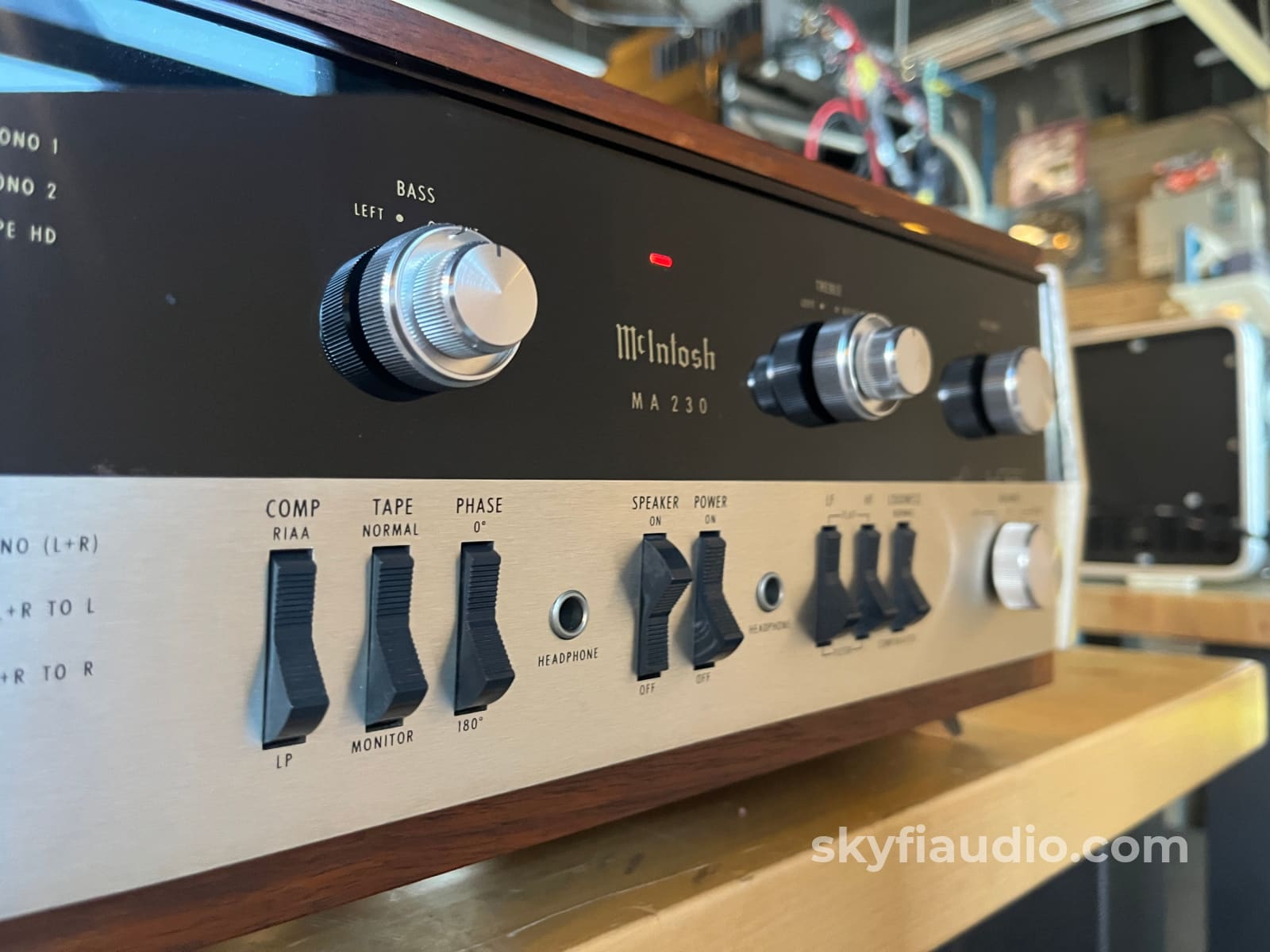
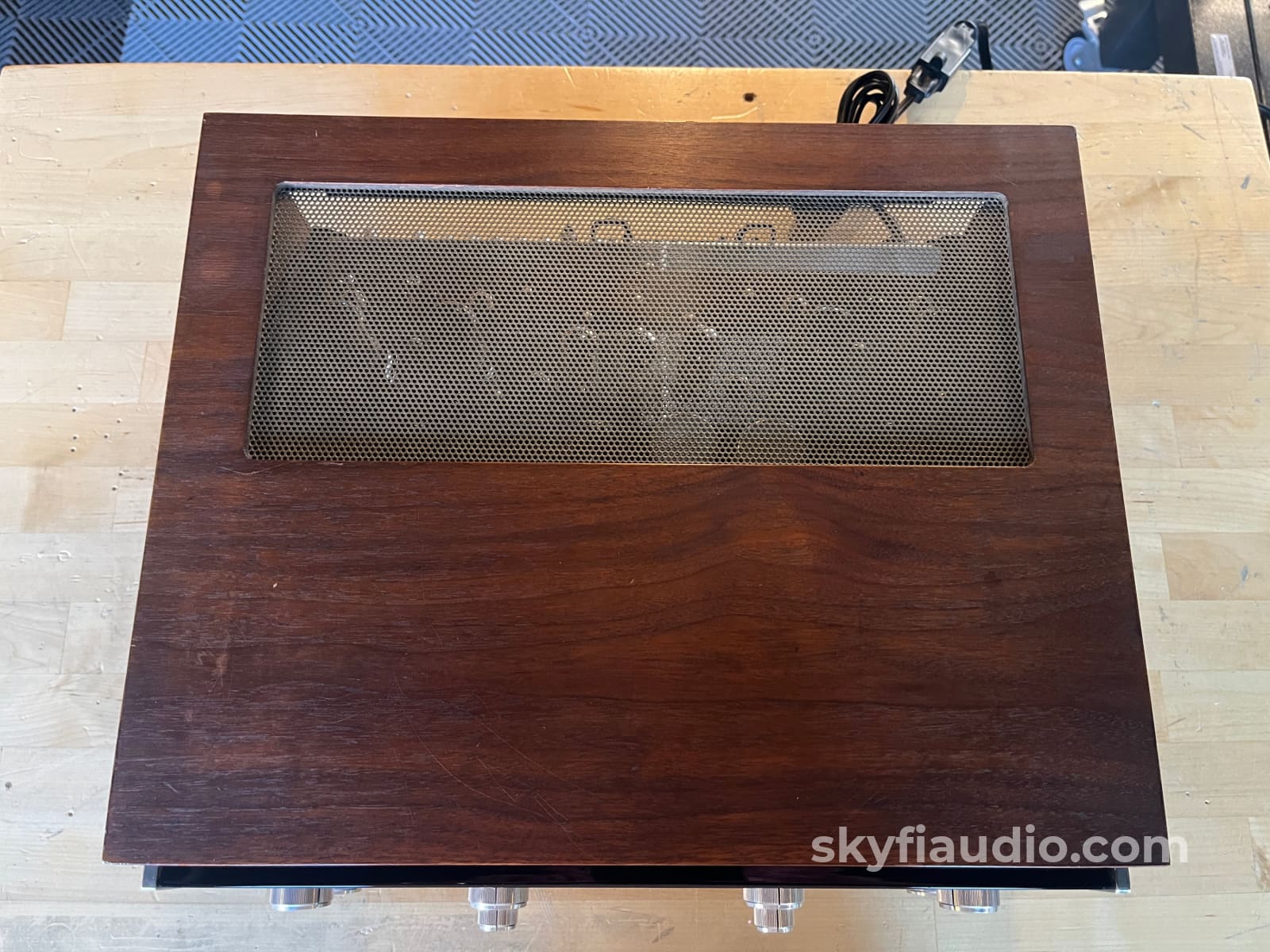

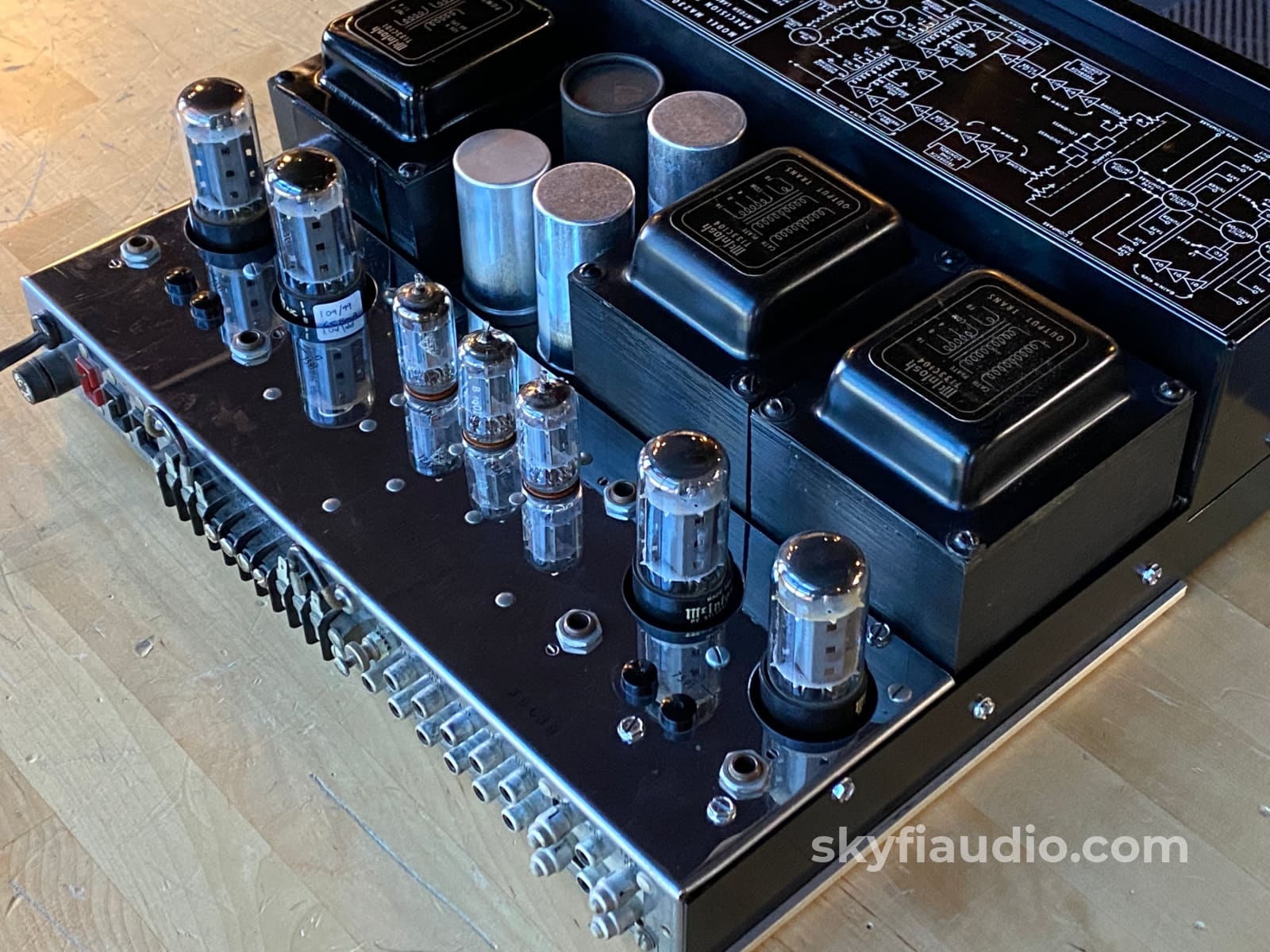
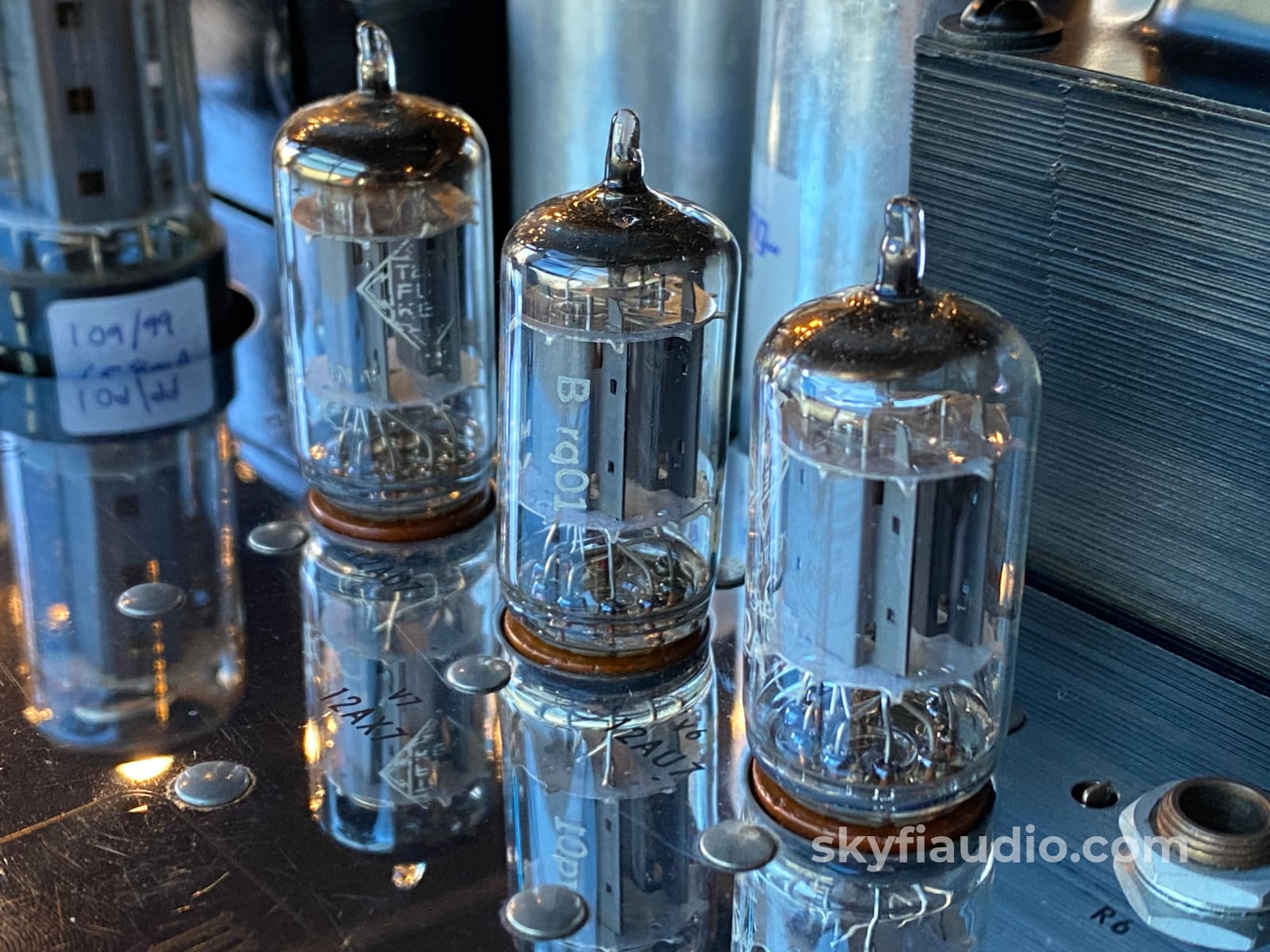
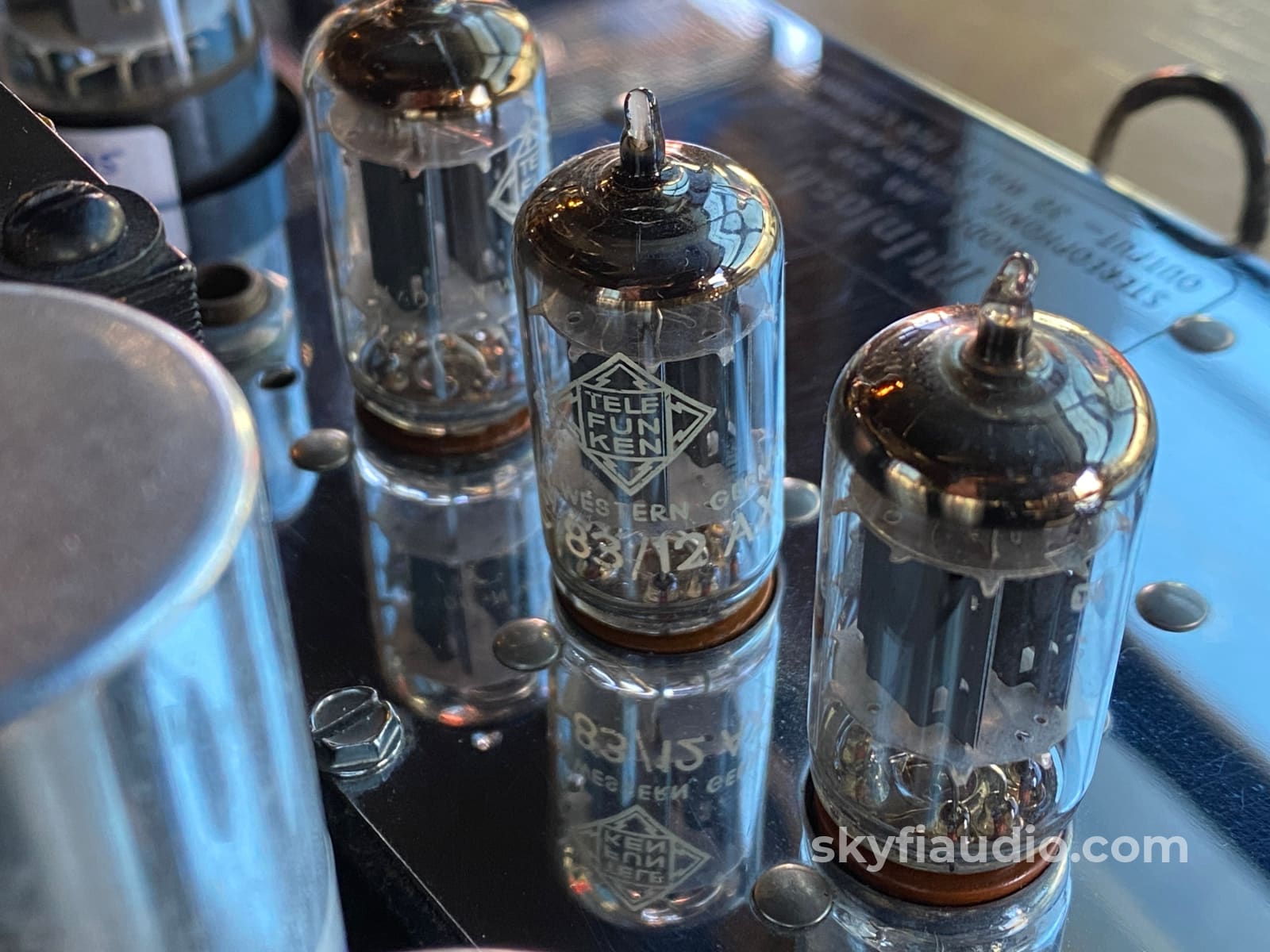
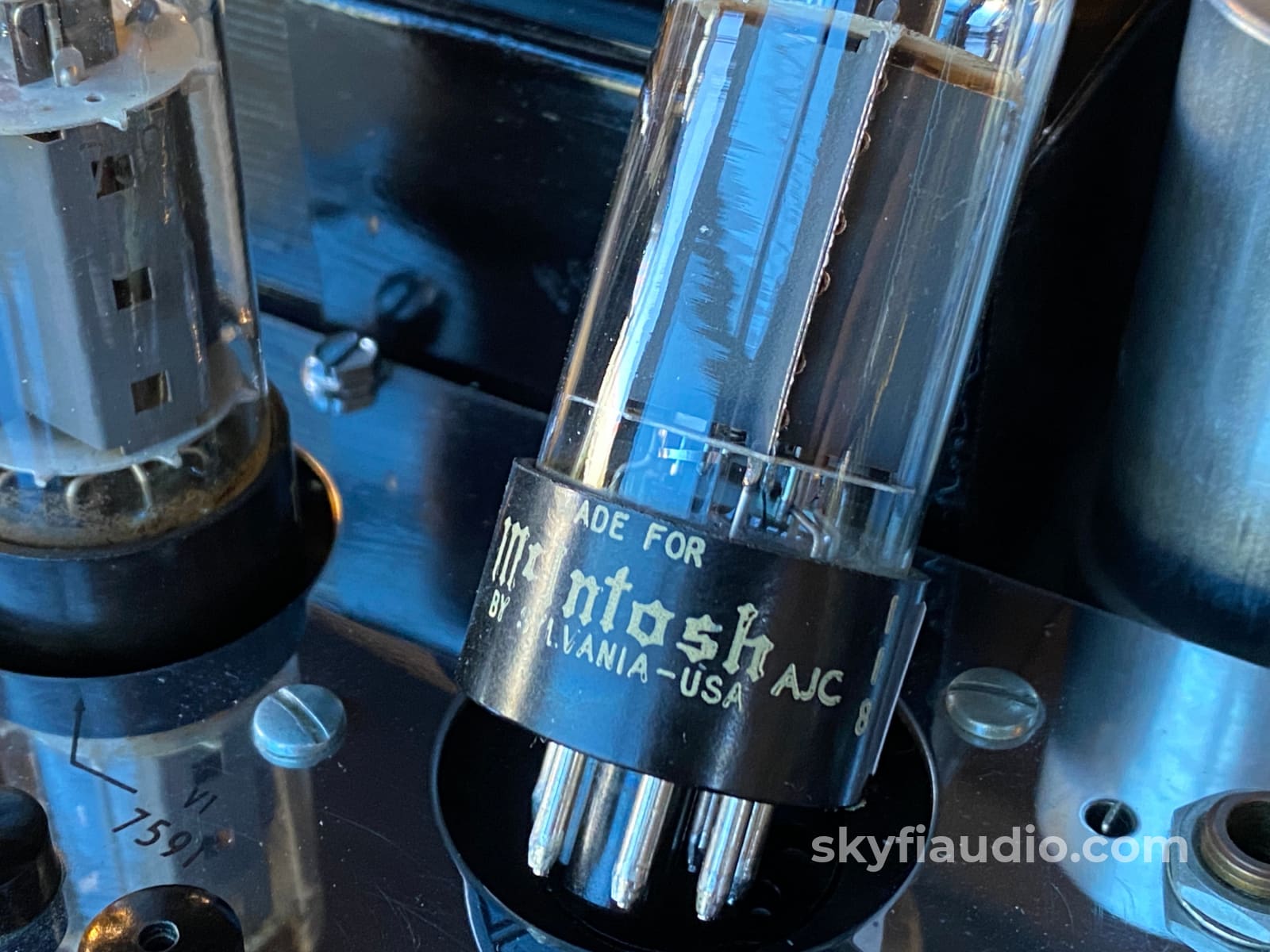
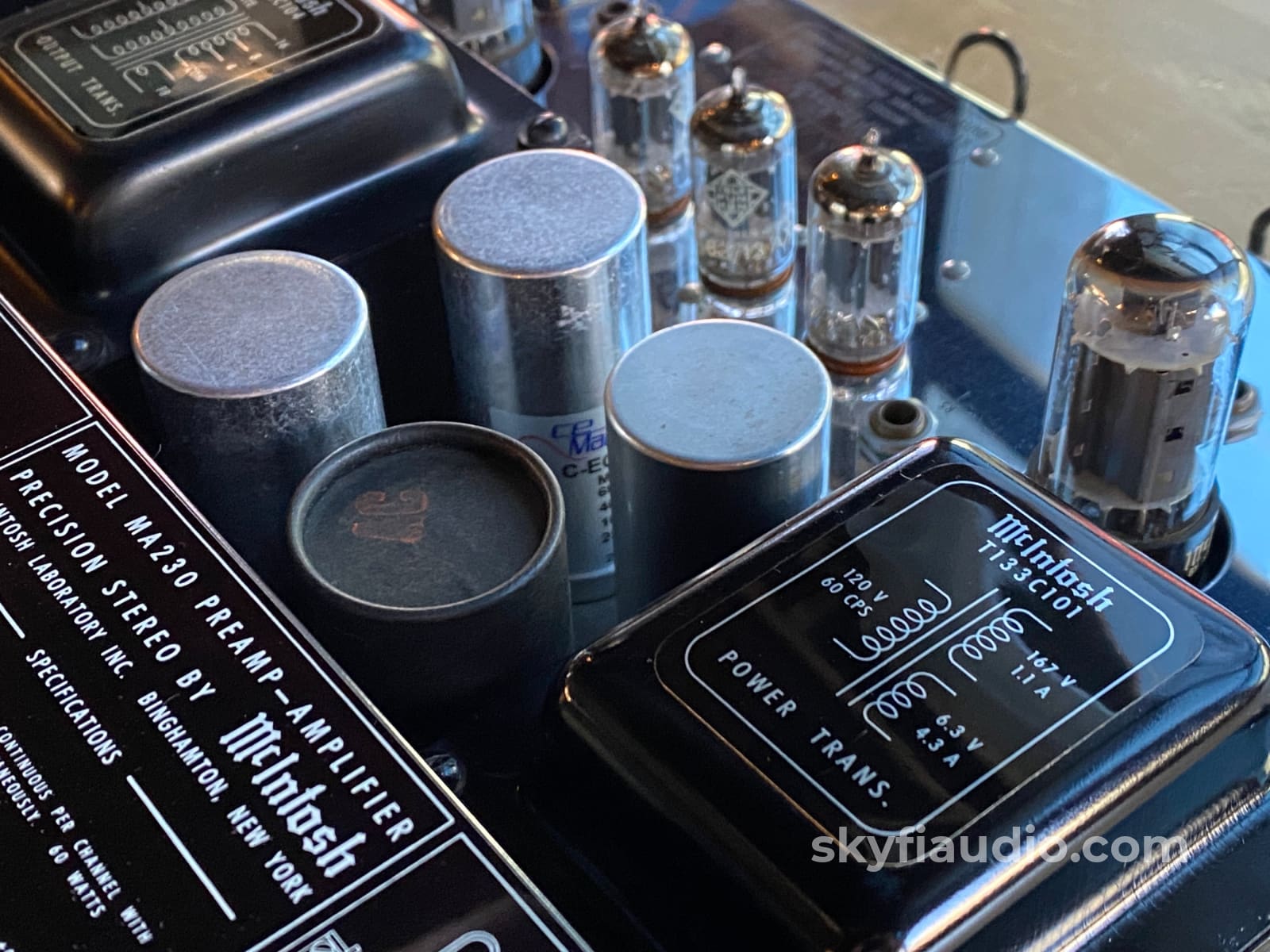
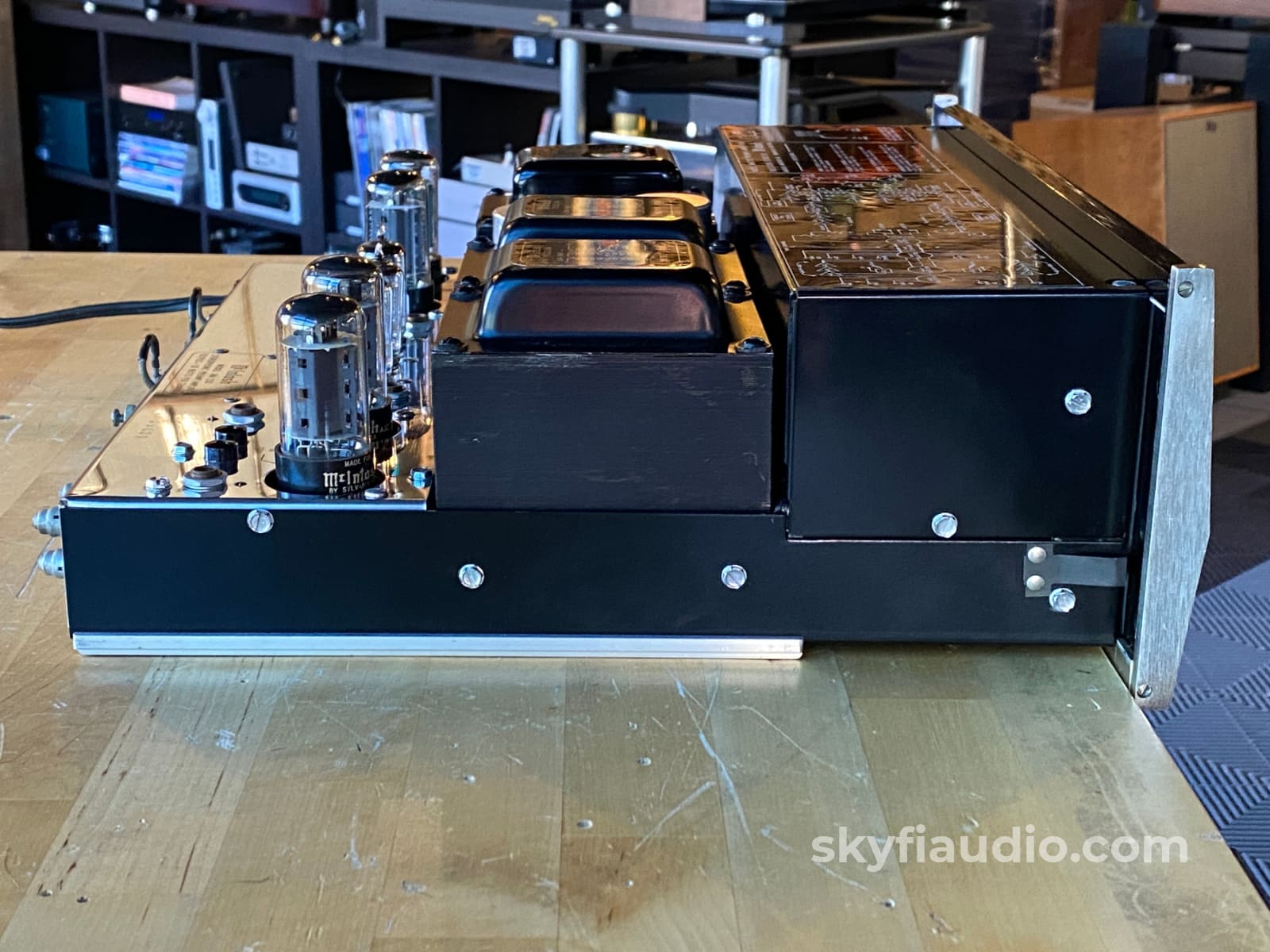
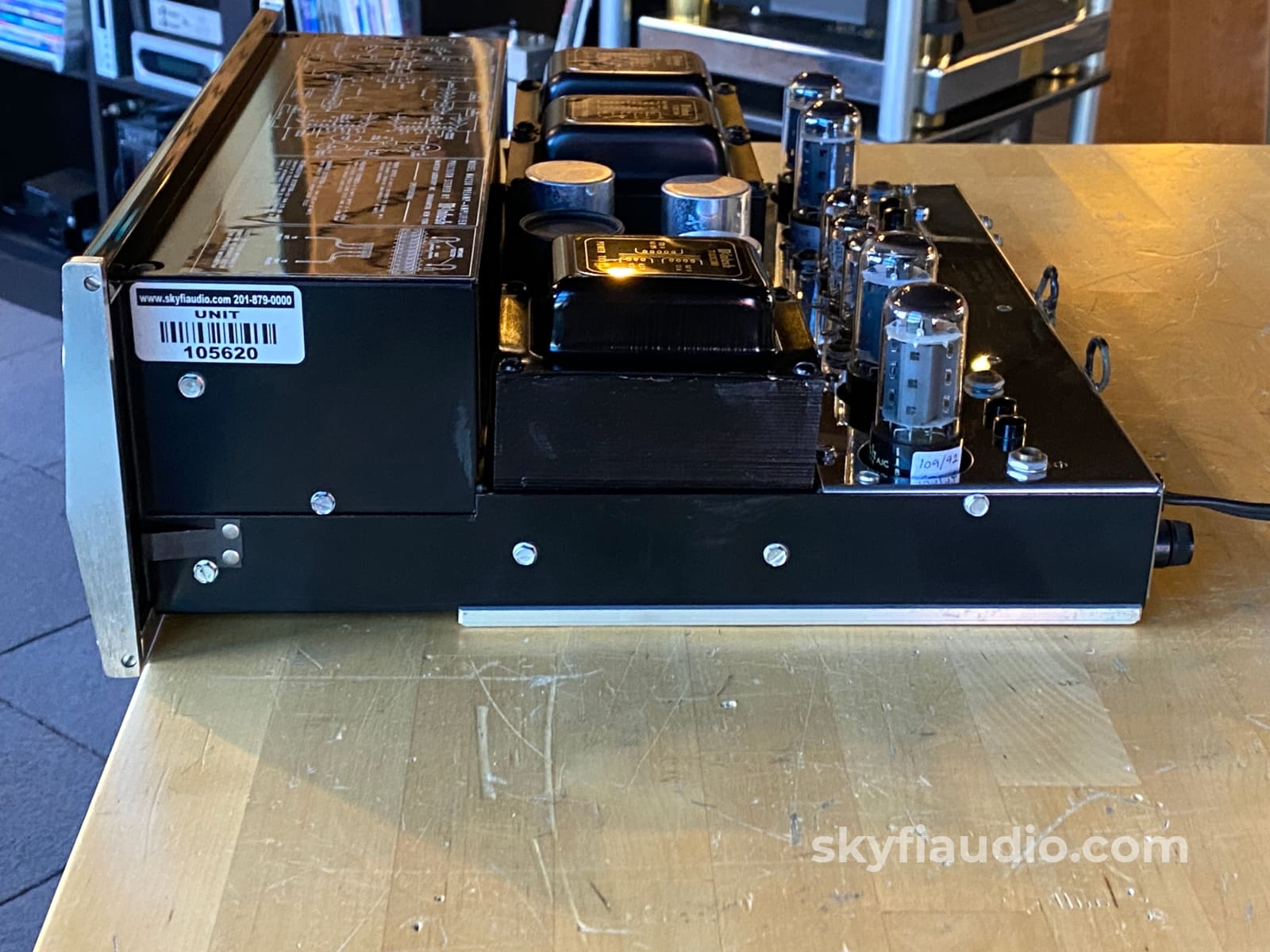
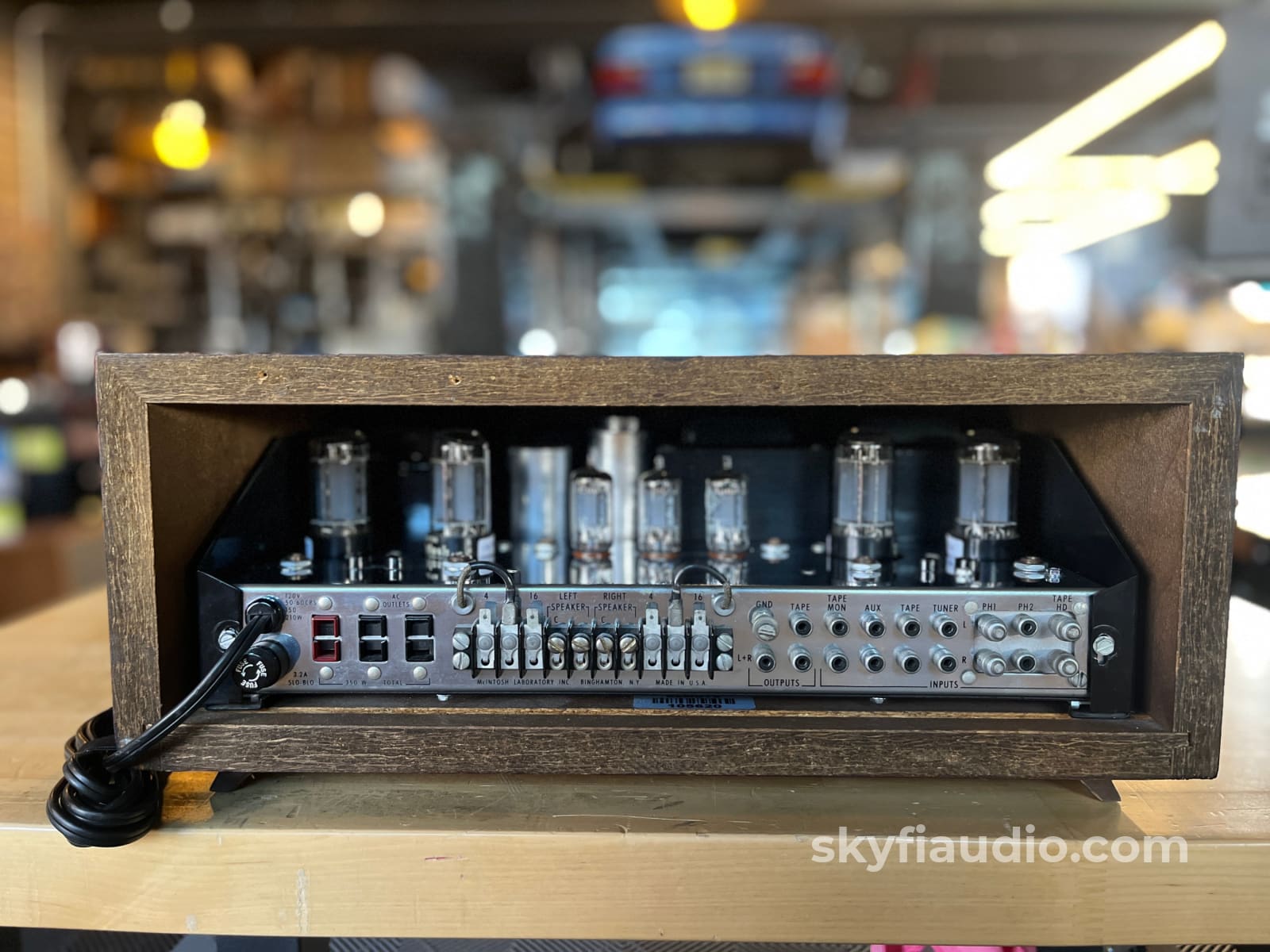
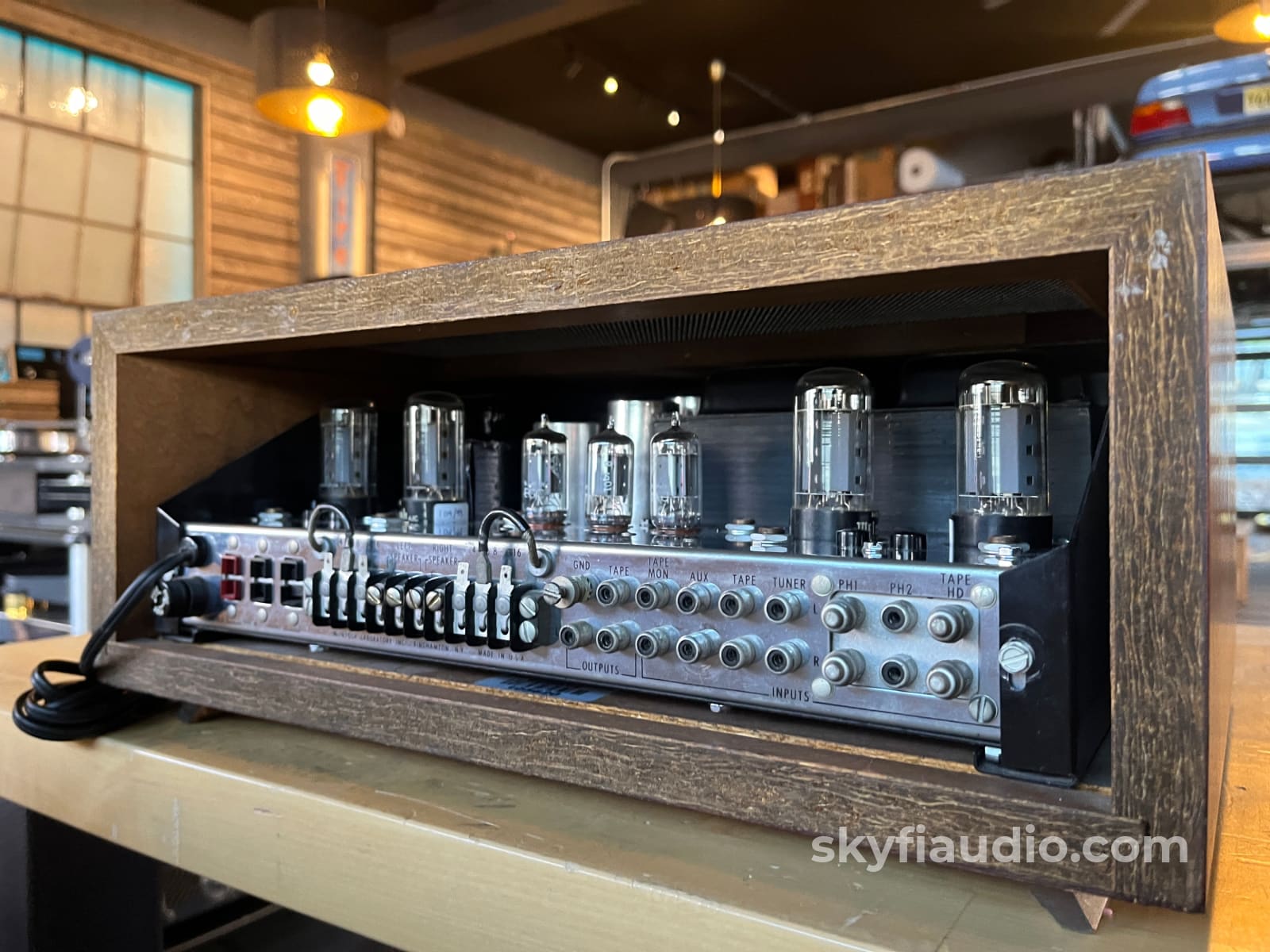
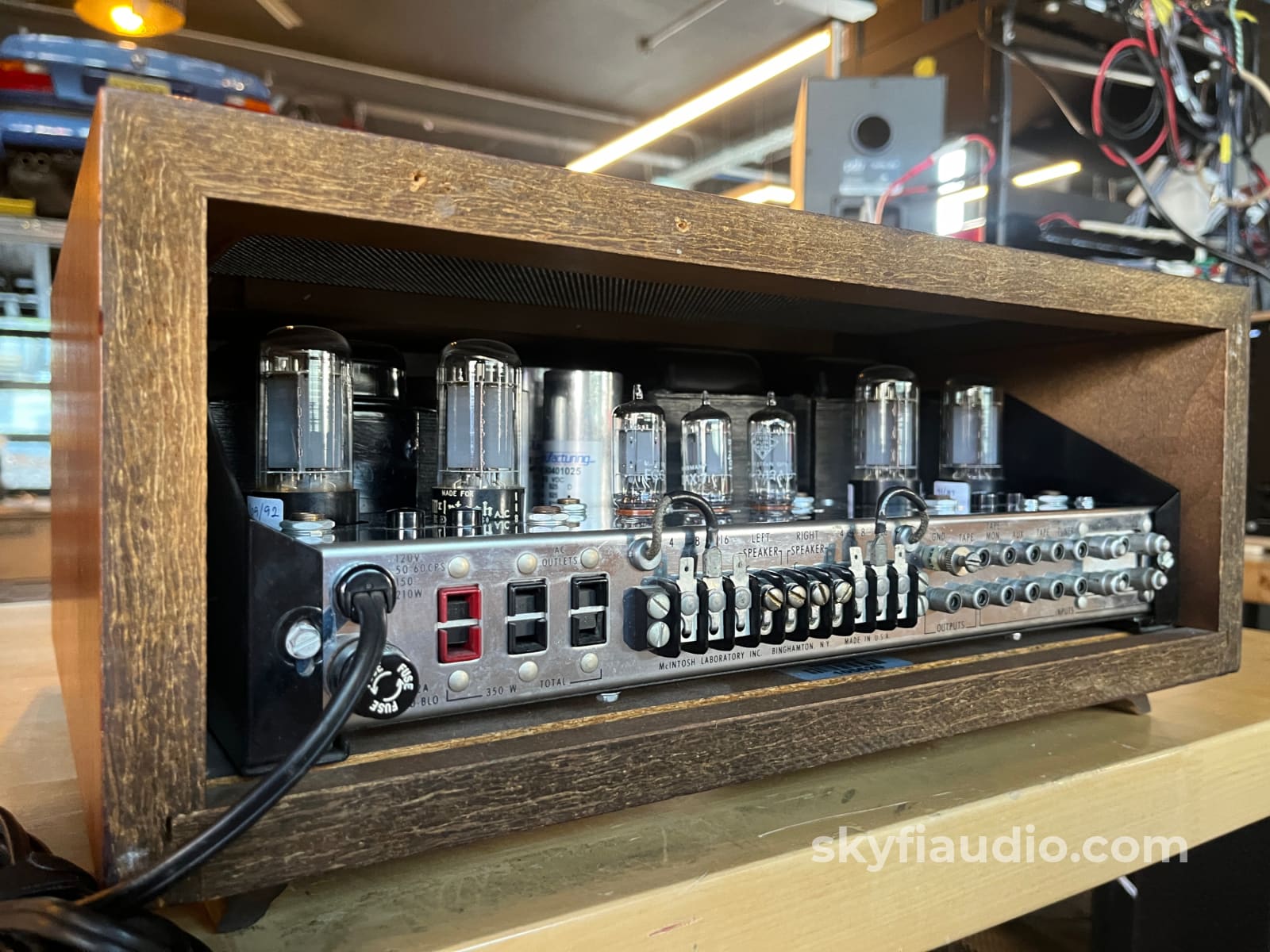
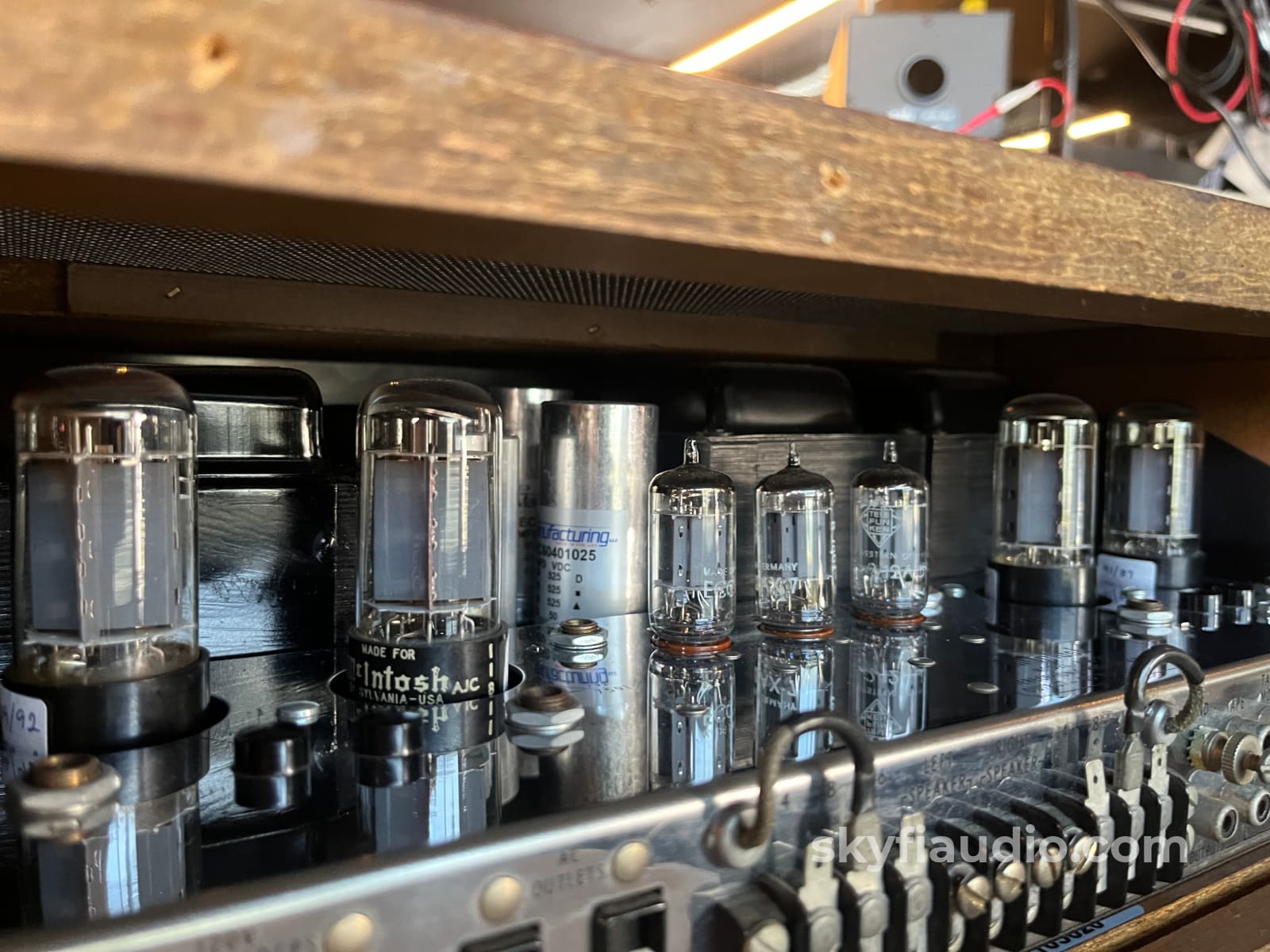
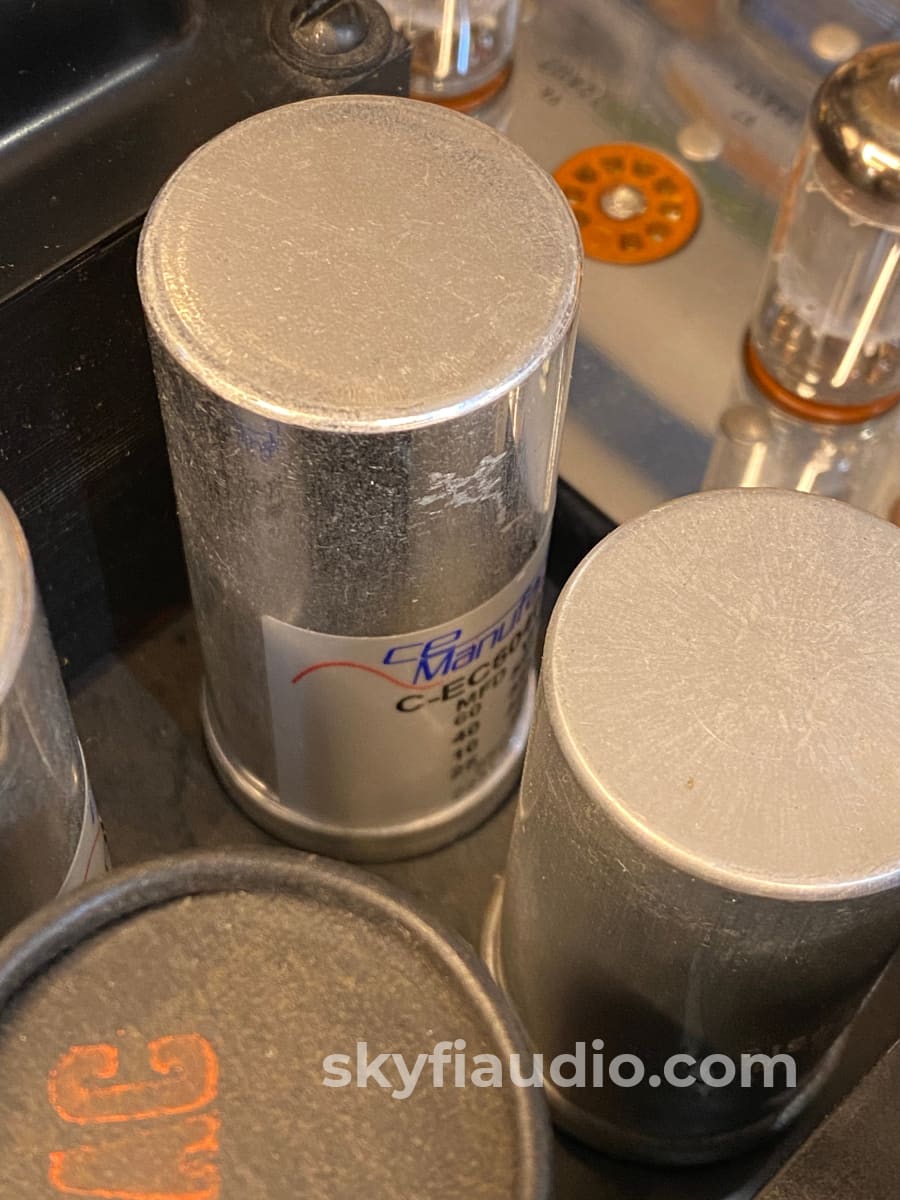
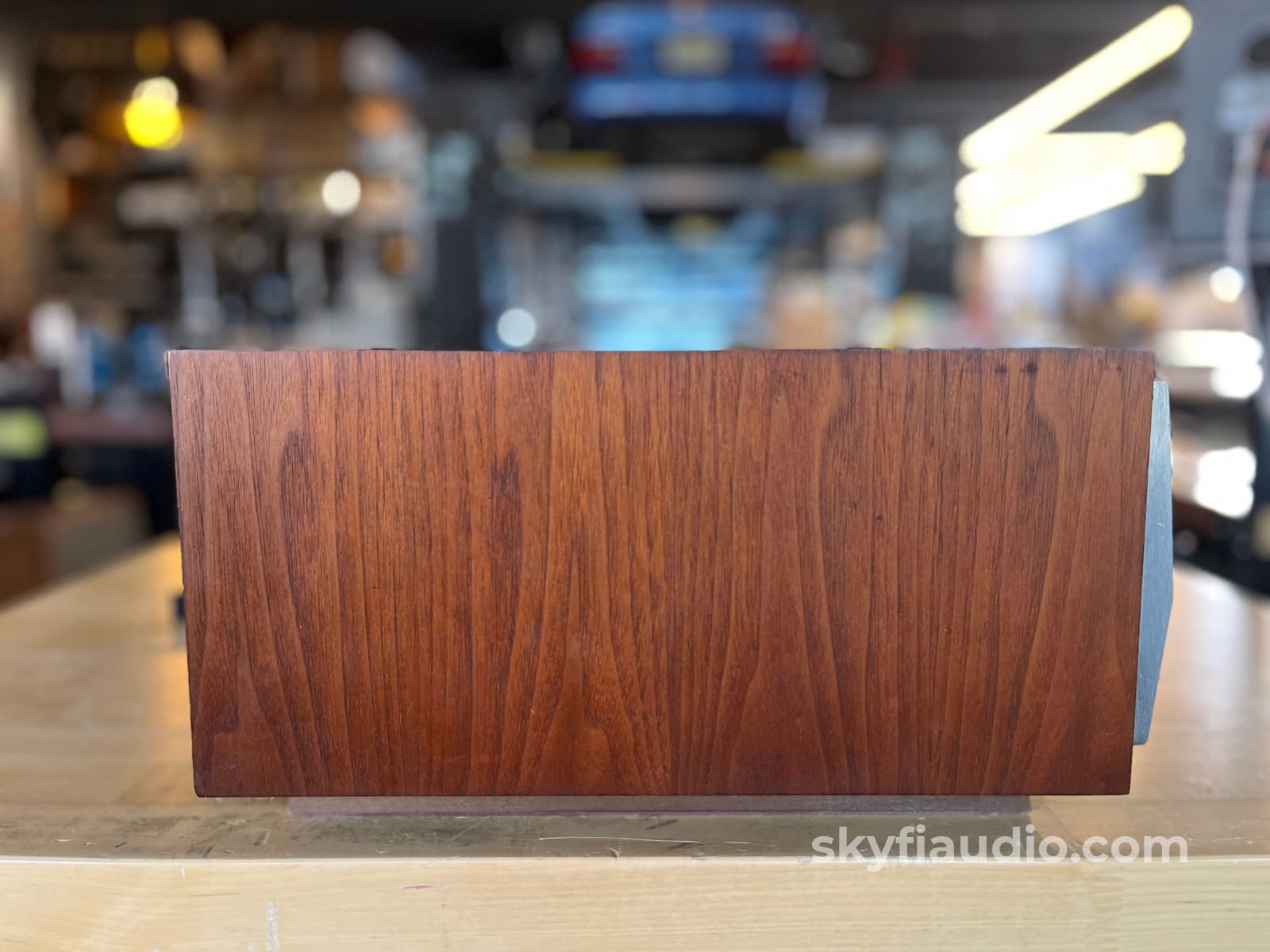
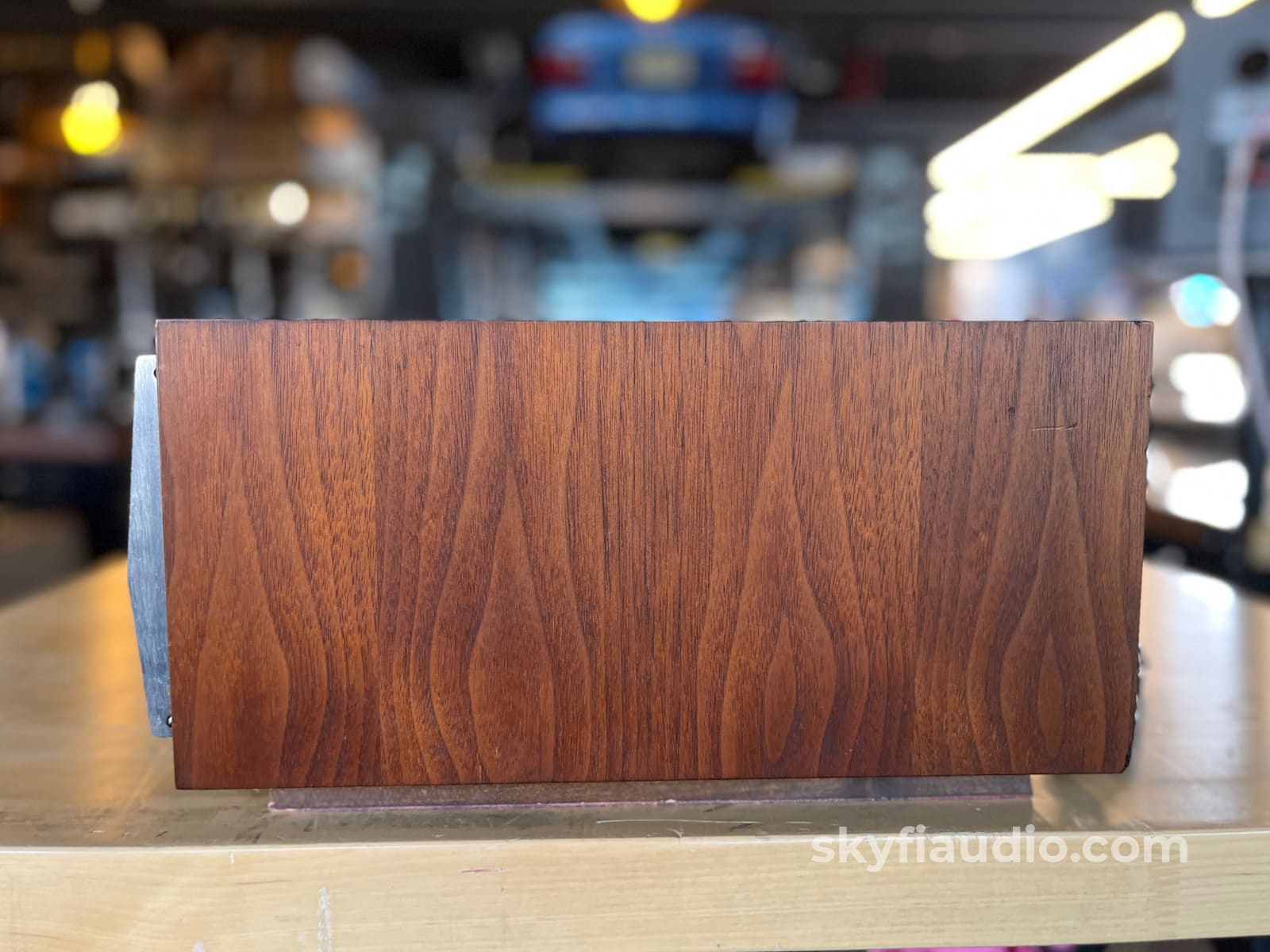
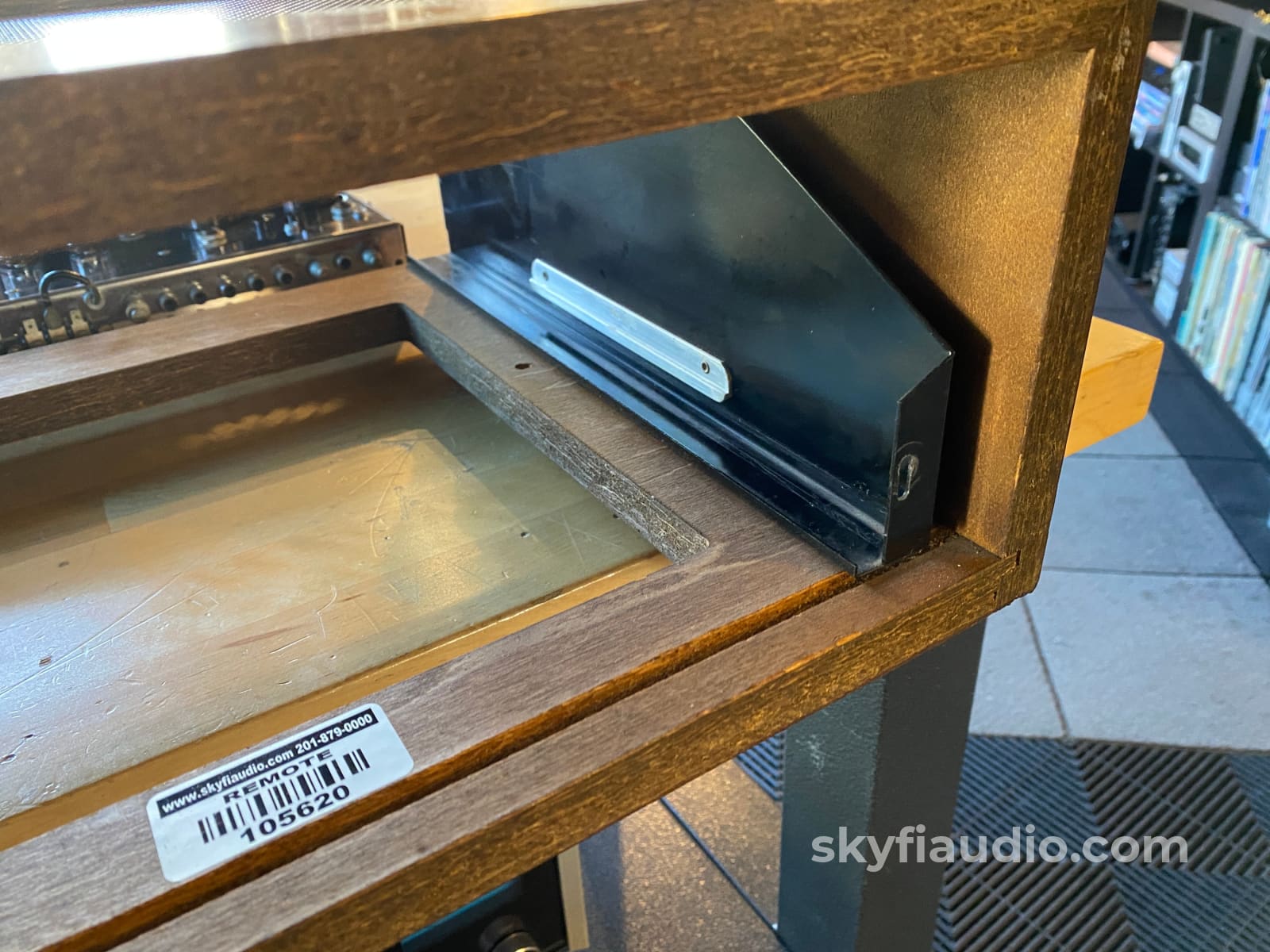
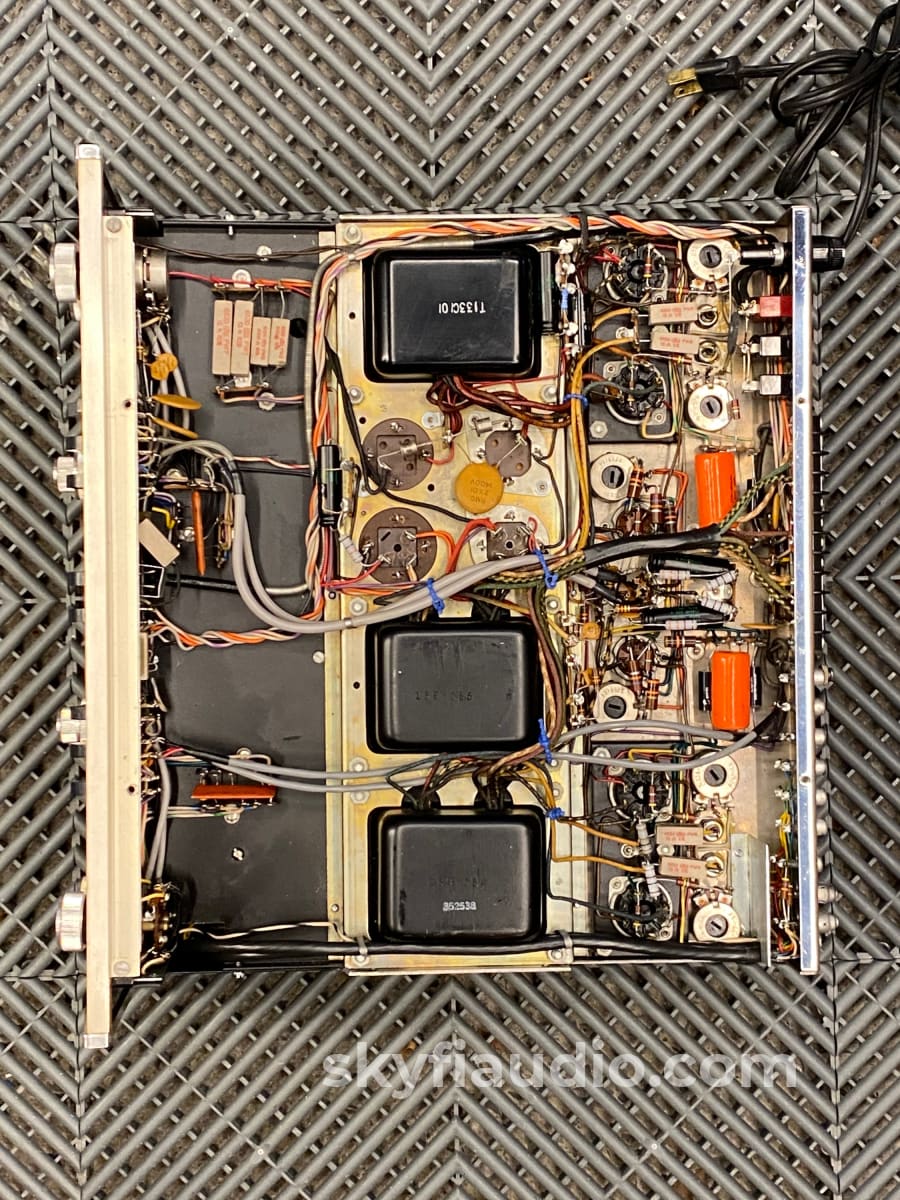
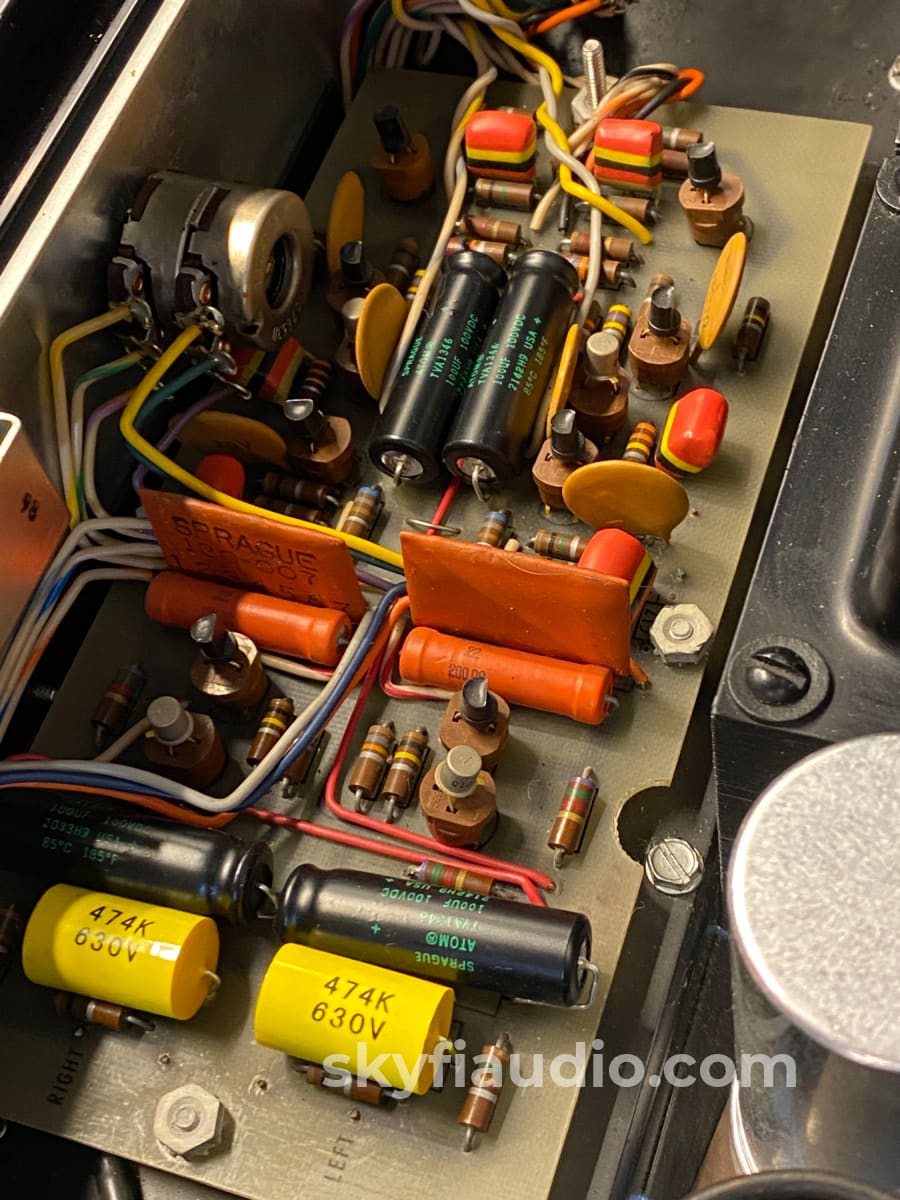
McIntosh MA230 Tube Integrated Amplifier w/Original Tubes & Rare Cabinet
Free Shipping on Most Electronics - Excludes Speakers and Items Requiring Freight - Contiguous U.S. Only
Pickup available at SkyFi 479
Usually ready in 24 hours

McIntosh MA230 Tube Integrated Amplifier w/Original Tubes & Rare Cabinet
SkyFi 479
479 South Broad Street
Glen Rock NJ 07452
United States
General:
The MA230 is one of our favorite Integrated amplifiers ever that we see into SkyFi.
This is a highly collectible piece and great examples like these are increasing in value every year. McIntosh did not make many tube integrated models, making this a collectors piece from the early 1960’s and one of the most sought after tube integrated amps from McIntosh.
With its hybrid layout consisting of a solid state preamp and tube power amp, it's a very intriguing piece from McIntosh. Capable of delivering 30 WPC cleanly and can drive most speakers well, but it will excel with high efficiency loudspeakers - for instance Klipsch.
This particular MA230 is in excellent condition with its rare original tubes and wood cabinet. An amazing piece for any vintage McIntosh collector.
SkyFi Cosmetic Notes:
Considering its age at over 60 years as of this listing writing, this MA230 is in very good condition. The unit itself has only minor cosmetic blemishes which include a small ding on the top edge of the faceplate trim, some paint imperfections where the bottom of the glass meets the lower apron, and light wear to the chrome surfaces and knobs. The cabinet has some marks on the top from stacking but presents very well overall.
SkyFi Technical Notes:
This MA230 comes complete with a rare matching wood cabinet. This cabinet features a notch at the back which accommodates special brackets and trays. The cabinet is loaded with a special set of rails that allow the extra deep MA230 to be loaded and locked in place with a couple of screws through the rear of the unit.
The tube set loaded into this MA230 is very special. The output tubes are McIntosh branded Sylvania 7591 which test almost new. The driver tubes are authentic long smooth plate Telefunken 12AU7 and 12AX7 which also test extremely well.
This MA230 was partially restored before arriving here at SkyFi. One of the mult-section filter capacitors was replaced, along with all of the axial electrolytic capacitors in the preamp and power amp circuits. Select resistors appear to have been replaced as needed. Many coupling capacitors have also been replaced. The work that was completed looks very clean and the parts that were used meet our standards.
Brand Background:
McIntosh Laboratory is an American manufacturer of handcrafted high-end audio equipment based in Binghamton, New York. The company was founded in 1949 by Frank McIntosh. The company designs and produces audio amplifiers, stereo tuners and other consumer electronics products.
Ownership:
Single Owner
Connections:
RCA, Speaker screw-down binding Posts, AC power outputs
General Sound:
Smooth, uncolored, undistorted natural and clean
Cosmetic Condition:
8/10 = Very Good. Excellent front faceplate, one minor flaw on chassis side or top. See our detailed rating description here.
Working Condition:
Working perfectly and tested in our lab and listening room.
Included:
Just the unit and power cord.
Packing:
Will be packed using our highly developed in-house process and custom packing materials.Specs:
ELECTRICAL: Stereo. Hybrid (solid state preamp and tube power amplifier). 30w/ch stereo, 60w mono. Response 20-20kHz (+0 -0.5dB). Distortion 0.5%. Noise and hum -75dB high level, -60dB low level . Output impedance 4, 8 and 16 ohms. Damping factor 10. Input sensitivity and impedance: high level 0.25V at 250k, phono 1.5mV at 47k, tape head 1.5mV at 1 meg. Tape output 0.25V into 25k. L+R output 10V into 5k. Dual concentric tone controls +18dB to -18dB. LF filter 50Hz at 12dB/oct. HF filter 5k at 12dB/oct.
FRONT PANEL: Glass panel at top. Anodized gold at bottom. Input selector: aux, tape, tuner, phono 1, phono 2 and tape hd. Bass and treble each dual concentric. Volume. Mode selector: L to L+R, R to L+R, stereo rev, stereo, mono (L+R), L+R to L and L+R to R. Balance. Rocker switches: comp: RIAA or LP, tape monitor, phase: 0 or 180, speaker: on or off, power: on or off, LF: flat or filter, HF: flat or filter, loudness: flat or compensate. Headphone jacks. Red power indicator.
BACK PANEL: Barrier strips for 4, 8, and 16 ohms, Outputs: Tape and L+R. High level inputs: tape mon, aux, tape and tuner. Low level inputs: ph 1, ph 2 and tape hd. Ground binding post. AC outlets: 2 switched, 1 unswitched. Fuse
Power output: 30 watts per channel into 8 Ω (stereo)
Frequency response: 15 Hz to 70 kHz
Total harmonic distortion: 0.5%
Damping factor: 10
Input sensitivity: 1.5mV (MM), 250mV (line)
Signal to noise ratio: 60 dB (MM), 75 dB (line)
Speaker load impedance: 4 Ω to 16 Ω
Semiconductors: 8 x 2N2926, 4 x 11BQ101
Valve complement: 4 x 7591, 2 x 12AU7, 1 x 12AX7
Dimensions:
5-7/16"H, 16"W and 14-1/2"D
Weight:
43 lbs.
Approximate Age:
1963
Link to Manual:
Click Here
Recommended Cables:
Kimber Kable - RCA Interconnects - Better
Kimber Kable - RCA Interconnects - Best
Kimber Kable - Phono Interconnects
Kimber Kable - Speaker Cables - Better
Testing Process:
We start with a visual inspection of all internal components to make sure that there are no signs of heat stress or damage. Capacitors are checked for telltale signs of predictive failure including bulging, shrunken wrappers, or physical leakage. We also inspect the PCBs for discoloration from resistors or transistors that may have been running hot. On vintage units we often spot check select capacitors for value and ESR.
If the device has the ability to decouple the preamplifier from the power amplifier, we remove the jumpers and independently test each section. If the device cannot be decoupled, we assess the electronic condition of the piece by analyzing the speaker level output only.
We start by connecting the "Pre-Out" jacks of the integrated to a Sencore PA81 Power Analyzer which simulates real world loading conditions and gives us an oscilloscope interface. The first order of business is checking that the volume control works smoothly throughout its entire range with acceptable channel balance. This is accomplished by feeding a 1 KHz sine wave into one of the preamp’s line level inputs while monitoring the preamp’s output on an oscilloscope.
We then switch to a 1 KHz square wave to test the tone controls, loudness function, and filters where applicable. During this step we are watching for equal alteration of the test signal by both channels. This also helps us identify dirty controls that will need treatment.
Once the basic line stage functions are verified, we test each input individually. This is especially important for devices that use relays to select their sources.
If the preamp section is equipped with a phono stage we test that as well. We use an inverse RIAA filter which allows us to feed a reference test signal into the phono input with the proper RIAA equalization and level. A square wave or sine sweep is used to verify that the device’s phono stage is faithfully reproducing the RIAA curve.
Next we test the power amplifier section by connecting the integrated amplifier speaker outputs to a Sencore PA81 Power Analyzer which acts as a dummy load, DC offset monitor, and oscilloscope interface. We start with a low level 1 KHz test signal at the "Main In” jacks and slowly increase its amplitude while monitoring the output on an oscilloscope for signs of noise, clipping, distortion, or improper channel balance. We continue increasing the signal level until the amplifier reaches clipping.
At this point we take an output power measurement and compare it to the spec sheet of the amplifier to verify proper performance. We finish off the bench evaluation with a 1 KHz square wave check and a 20 Hz to 20 KHz sine sweep to assess the amplifier’s frequency response characteristics.
This battery of tests will usually reveal if the amplifier has any issues that need further attention.
If the preamp and power amp both pass these tests, we reconnect the sections and verify that the preamp section can drive the power amp to rated power with a 1KHz tone on one of the line level inputs.
Before the device leaves the bench, we perform a listening test with actual music using a variety of preferred test tracks. Our benches are outfitted with familiar monitor speakers which help us identify inconsistencies that will not always show up on our test gear. The main things that we are listening for are hum or noise with no signal present, proper center image, clicks, pops, or any other obvious undesirable audio characteristics.
If the unit passes all of these tests it moves to our long term testing rig where we simulate real word operating conditions for 6-8 hours minimum. This allows us to monitor the unit for signs of thermal runaway or intermittent issues that only crop up when the unit has fully come up to temperature.
Choose options























